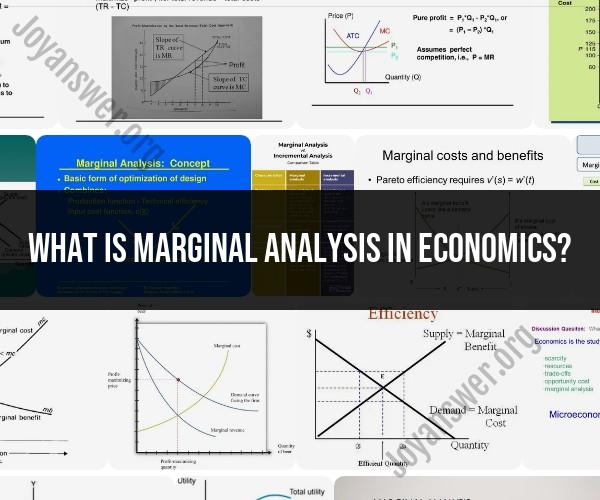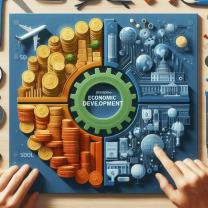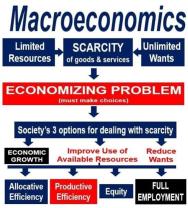What is marginal analysis in economics?
Marginal analysis is a fundamental concept in economics that involves examining the incremental changes in costs and benefits associated with a particular decision or action. It is a decision-making tool that helps individuals, businesses, and policymakers assess the effects of small changes or adjustments to their choices. Here are key concepts related to marginal analysis in economics:
Marginal Cost (MC): Marginal cost refers to the additional cost incurred when producing one more unit of a good or service. It represents the extra expense associated with increasing production by a single unit.
Marginal Benefit (MB): Marginal benefit refers to the additional benefit or utility gained from consuming one more unit of a good or service. It represents the extra satisfaction or value obtained by making a small change in consumption.
Optimal Decision-Making: The central idea of marginal analysis is to make decisions at a point where the marginal benefit equals the marginal cost (MB = MC). This is known as the "optimal" or "equilibrium" point and represents the most efficient choice.
Diminishing Marginal Returns: The concept of diminishing marginal returns suggests that as one continues to consume or produce more, the marginal benefit tends to decrease while the marginal cost often increases. This reflects the idea that the first few units of a good or service provide the most significant benefits at the lowest cost.
Comparative Analysis: Marginal analysis often involves comparing the marginal benefit and marginal cost of alternative courses of action. Decision-makers choose the option with the highest net benefit (MB - MC).
Dynamic Decision-Making: Marginal analysis can be applied dynamically to continuously adjust choices as circumstances change. It helps individuals and organizations adapt to evolving conditions.
Policy Implications: Policymakers use marginal analysis to assess the potential effects of various policies, taxes, subsidies, and regulations. They aim to make choices that maximize overall societal welfare.
Consumer Behavior: In microeconomics, marginal analysis is used to explain consumer behavior. Consumers seek to maximize their utility by comparing the marginal benefit of consuming one more unit of a good to its price (marginal utility per dollar).
Firm Production: Businesses use marginal analysis to optimize production levels. They aim to produce up to the point where marginal cost equals marginal revenue (MC = MR) to maximize profit.
Resource Allocation: Marginal analysis helps allocate resources efficiently. It assists in determining whether it's worthwhile to produce more, expand capacity, or allocate resources to different activities.
Environmental and Social Implications: Marginal analysis can also be applied to assess the environmental and social costs and benefits of various activities. It helps identify the point at which additional production may lead to negative externalities or increased resource depletion.
Overall, marginal analysis is a powerful economic tool that provides insights into decision-making, resource allocation, pricing strategies, and the optimization of various economic activities. It helps individuals and organizations make rational choices by considering the incremental effects of their decisions.












